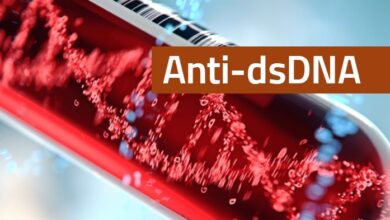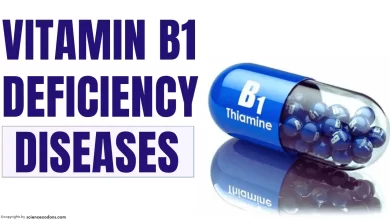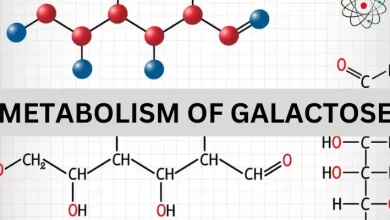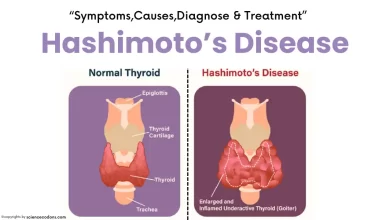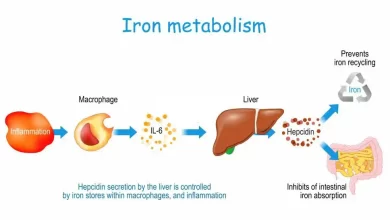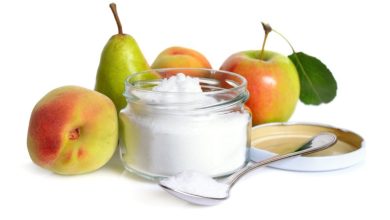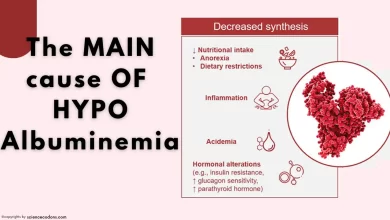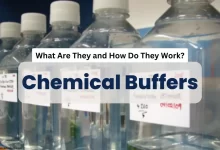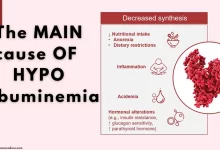Beta oxidation is a cellular biochemical reaction that produces energy from lipids. we will thoroughly examine B-oxidation of different fatty acids and how energy is produced from each fatty acid in the mitochondria. Beta oxidation is a fascinating process that allows our cells to extract energy from fatty acids. Fatty acids are long chains of carbon and hydrogen atoms that are stored in fat molecules.
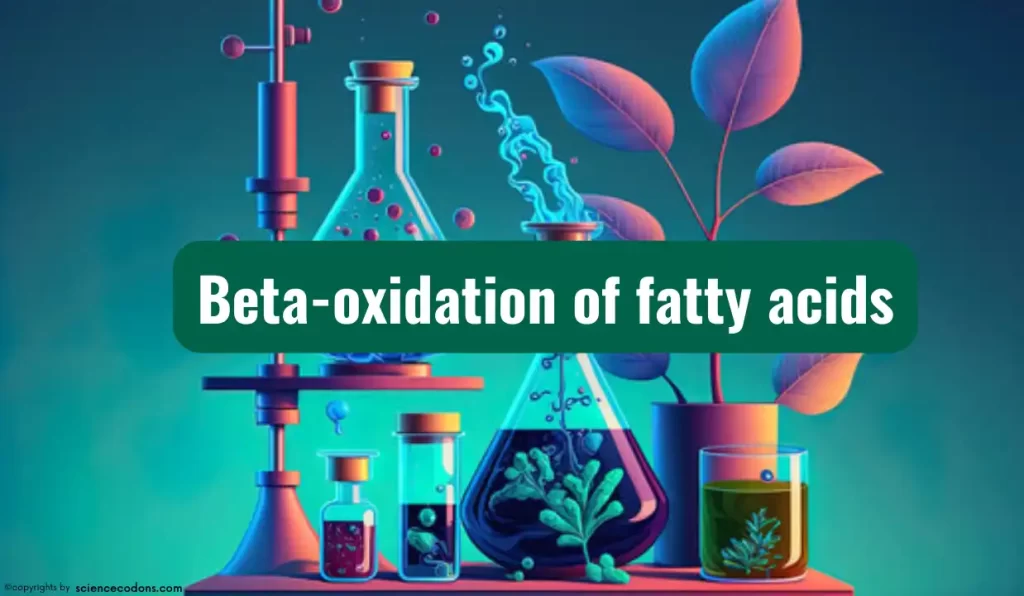
What are the 4 steps of beta oxidation?
Beta oxidation consists of the following 4 sequential reactions:
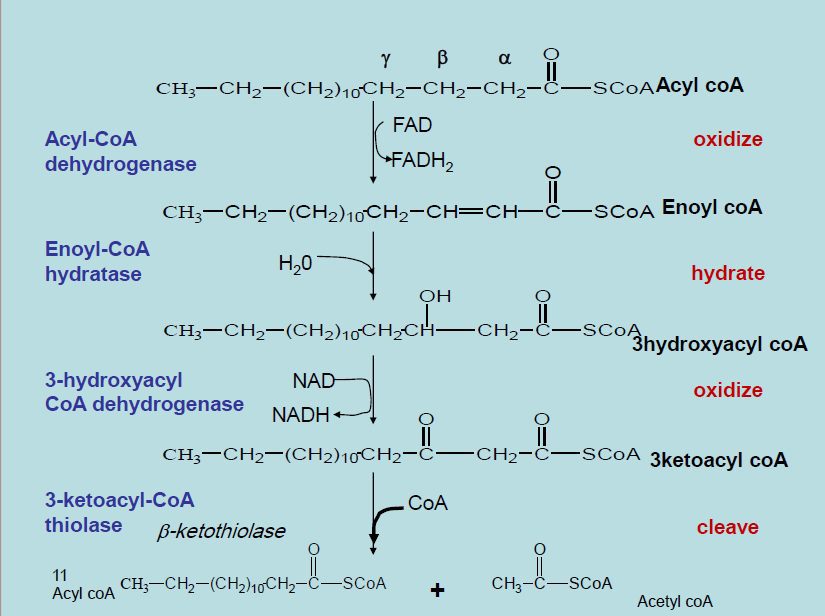
1- Acyl CoA, formed in the mitochondrial matrix, can be oxidized by the enzyme acyl CoA dehydrogenase, which uses flavin adenine dinucleotide as a coenzyme. The reaction produces enoyl CoA with a double bond between carbon atoms 2 and 3. In this reaction, the coenzyme of this enzyme goes from the oxidized state to the reduced state (FADH2).
2- In the next step, enoyl CoA is converted by the enzyme enoyl CoA hydratase to produce 3-hydroxyacyl CoA.
3- In the third step, the enzyme 3-hydroxyacyl CoA dehydrogenase converts 3-hydroxyacyl CoA to 3-ketoacyl CoA. The coenzyme for 3-hydroxyacyl CoA dehydrogenase is NAD, which is converted to NADH2.
4- In the fourth step, 3-ketoacyl CoA is acted upon by the enzyme 3-ketoacyl CoA thiolase and reacts with a molecule of coenzyme A. The reaction produces a molecule of acetyl CoA and an acyl CoA with 2 fewer carbons than the original. The newly produced acyl CoA re-enters the beta oxidation process and releases two carbons in the form of acetyl CoA. This process continues until all the carbons of acetyl CoA are separated from the original molecule in the form of two-carbon units.
| Step | Reaction | Enzyme | Product |
|---|---|---|---|
| 1 | Acyl-CoA + FAD -> Enoyl-CoA + FADH2 | Acyl-CoA dehydrogenase | FADH2 |
| 2 | Enoyl-CoA + H2O -> 3-Hydroxyacyl-CoA | Enoyl-CoA hydratase | 3-Hydroxyacyl-CoA |
| 3 | 3-Hydroxyacyl-CoA + NAD+ -> 3-Ketoacyl-CoA + NADH | 3-Hydroxyacyl-CoA dehydrogenase | NADH |
| 4 | 3-Ketoacyl-CoA + CoA -> Acyl-CoA (n-2) + Acetyl-CoA | 3-Ketoacyl-CoA thiolase | Acetyl-CoA |
Nomenclature substrates and enzymes in beta-oxidation
In naming substrates and enzymes, we used the number 3. In some references, the word “beta” is used instead of the number 3. Instead of 3-hydroxyacyl CoA, it is referred to as beta-hydroxyacyl CoA. In this nomenclature, the carboxyl group is not counted. The first carbon attached to the carboxyl group is called the alpha carbon, and the second carbon attached to the carboxyl group is called the beta carbon.

The enzymes in the beta oxidation pathway for long-chain fatty acids differ from those in the short-chain and medium-chain fatty acids pathway. In long-chain fatty acids, the enzymes enoyl CoA hydratase, hydroxyacyl CoA dehydrogenase, and 3-ketoacyl thiolase form a 3-enzyme complex connected to the membrane, known as a 3-task enzyme. All enzymes involved in the beta oxidation pathway of short-chain and medium-chain fatty acids are water-soluble and located in the mitochondrial matrix.
Beta oxidation: Energy production
1- Beta oxidation of fatty acids with an even number of carbons
Energy is generated through the beta oxidation of fatty acids. In each round of beta oxidation, one molecule of acetyl CoA, FADH2 and NADH are produced.
If a fatty acid has 16 carbons (like palmitoyl CoA), it must undergo 7 rounds of the beta oxidation pathway to be converted to acetyl CoA. The oxidation of this fatty acid produces 8 molecules of acetyl CoA, 7 molecules of FADH2, and 7 molecules of NADH.
In the electron transfer chain, each molecule of FADH2 is equivalent to 1/5 ATP, each molecule of NADH is equivalent to 2/5 ATP, and each molecule of acetyl CoA in the Krebs cycle produces 10 ATP. Therefore, 108 molecules of ATP are produced during these 7 rounds. Suppose we aim to calculate the overall energy efficiency. In that case, we need to subtract the ATP molecule used to activate palmitate and convert it to palmitoyl CoA from the previously mentioned 108 ATP molecules. Some references differ on whether the amount of ATP produced should be considered as 2 due to the conversion of ATP to AMP and phosphate, or as 1. Depending on the type of reference, the energy efficiency of palmitoyl CoA oxidation can be 107 or 106 ATP molecules.
| Step | Reaction | Enzyme | Product | ATP Yield |
|---|---|---|---|---|
| 1 | Acyl-CoA + FAD -> Enoyl-CoA + FADH2 | Acyl-CoA dehydrogenase | FADH2 | 1.5 |
| 2 | Enoyl-CoA + H2O -> 3-Hydroxyacyl-CoA | Enoyl-CoA hydratase | 3-Hydroxyacyl-CoA | 0 |
| 3 | 3-Hydroxyacyl-CoA + NAD+ -> 3-Ketoacyl-CoA + NADH | 3-Hydroxyacyl-CoA dehydrogenase | NADH | 2.5 |
| 4 | 3-Ketoacyl-CoA + CoA -> Acyl-CoA (n-2) + Acetyl-CoA | 3-Ketoacyl-CoA thiolase | Acetyl-CoA | 10 |
2- Fatty acids with an odd number of carbons
It’s like even carbon atoms. In the final stage of beta oxidation, there is a notable difference. Since the fatty acid has an odd number of carbon atoms, the final beta-oxidation occurs with a 5-carbon fatty acid. During beta oxidation, a molecule of acetyl CoA (2 carbons) and a molecule of propionyl CoA (3 carbons) are produced, totalling 5 carbons. Propionyl CoA must be converted by enzymes to enter the Krebs cycle.
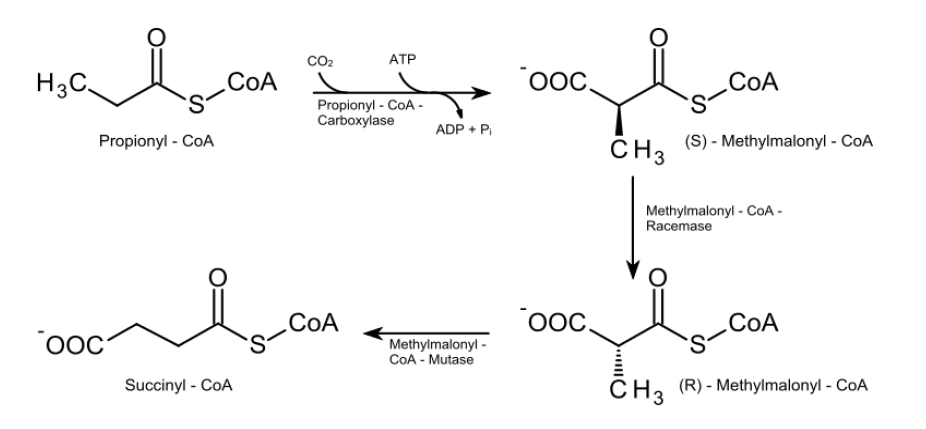
Under the influence of propionyl CoA carboxylase and with the help of ATP, it is carboxylated (with biotin as its coenzyme) to produce dimethyl malonyl CoA. Dimethyl malonyl CoA is converted to L-methyl malonyl CoA in the next step, with the help of the enzyme methyl malonyl CoA epimerase. In the next step, L-methylmalonyl CoA is converted to succinyl CoA by the enzyme methylmalonyl CoA mutase, with B12 as its coenzyme.
The succinyl CoA can now enter the Krebs cycle for metabolism. The beta oxidation pathway of odd-carbon fatty acids presents significant challenges. It is also less energy efficient than carbon fatty acids.
| Step | Reaction | Enzyme | Product |
|---|---|---|---|
| 1 | Acyl-CoA + FAD -> Enoyl-CoA + FADH2 | Acyl-CoA dehydrogenase | FADH2 |
| 2 | Enoyl-CoA + H2O -> 3-Hydroxyacyl-CoA | Enoyl-CoA hydratase | 3-Hydroxyacyl-CoA |
| 3 | 3-Hydroxyacyl-CoA + NAD+ -> 3-Ketoacyl-CoA + NADH | 3-Hydroxyacyl-CoA dehydrogenase | NADH |
| 4 | 3-Ketoacyl-CoA + CoA -> Acyl-CoA (n-2) + Acetyl-CoA | 3-Ketoacyl-CoA thiolase | Acetyl-CoA |
| 5 | Propionyl-CoA + CO2 + ATP -> D-Methylmalonyl-CoA + ADP + Pi | Propionyl-CoA carboxylase | D-Methylmalonyl-CoA |
| 6 | D-Methylmalonyl-CoA -> L-Methylmalonyl-CoA | Methylmalonyl-CoA epimerase | L-Methylmalonyl-CoA |
| 7 | L-Methylmalonyl-CoA + Vitamin B12 -> Succinyl-CoA + Vitamin B12 | Methylmalonyl-CoA mutase | Succinyl-CoA |
3- Beta oxidation of unsaturated fatty acids
The geometric isomer of these fatty acids is cis. The enzyme enoyl CoA hydratase can only add a water molecule to the trans double bond. For this reason, these fatty acids are not suitable for this enzyme. This problem is resolved with the help of auxiliary enzymes. Depending on the type of fatty acid (with one or more double bonds), different auxiliary enzymes are required. Oleic acid is an 18-carbon fatty acid with a cis double bond between carbons 9 and 10.
When oleic acid is in its active form (oleoyl CoA), the first three beta-oxidation reactions occur, accompanied by the release of three molecules of acetyl CoA.
An unsaturated 12-carbon fatty acid, cis delta 3 dodecenoyl CoA, is now formed. This compound is not a substrate for the enzyme enoyl CoA dehydrogenase. Because it is a geometric cis isomer. The enzyme that addresses the issue is enoyl CoA isomerase. This enzyme converts the cis delta 3 dodecenoyl CoA geometric isomer to trans delta 2 dodecenoyl CoA.
Now, it can be hydrated by the enzyme enoyl CoA dehydrogenase. In this manner, the fourth and subsequent rounds of beta-oxidation produce 9 molecules of acetyl CoA from 18-carbon oleoyl CoA. In the metabolism of oleic acid, the first reaction in the fourth round of beta oxidation is not performed, resulting in the production of one less molecule of FADH2 in terms of energy balance.
| Step | Reaction | Enzyme | Product | Additional Enzyme |
|---|---|---|---|---|
| 1 | Acyl-CoA + FAD -> Enoyl-CoA + FADH2 | Acyl-CoA dehydrogenase | FADH2 | None |
| 2 | Enoyl-CoA + H2O -> 3-Hydroxyacyl-CoA | Enoyl-CoA hydratase | 3-Hydroxyacyl-CoA | Enoyl-CoA isomerase (for cis bonds) |
| 3 | 3-Hydroxyacyl-CoA + NAD+ -> 3-Ketoacyl-CoA + NADH | 3-Hydroxyacyl-CoA dehydrogenase | NADH | None |
| 4 | 3-Ketoacyl-CoA + CoA -> Acyl-CoA (n-2) + Acetyl-CoA | 3-Ketoacyl-CoA thiolase | Acetyl-CoA | 2,4-Dienoyl-CoA reductase (for conjugated double bonds) |
4- Fatty acids with multiple double bonds
If a fatty acid has more than one double bond, such as linoleic acid, it contains two cis double bonds on carbons 9 and 12 in its 18-carbon structure. After three rounds of oxidation, this fatty acid produced three molecules of acetyl CoA, resulting in a 12-carbon fatty acid with the isomeric configuration: cis delta 3, cis delta 6.
The enzyme enoyl CoA isomerase converts this bond to trans delta 2, cis delta 6, allowing another round of beta oxidation to occur. After this step, a 10-carbon compound forms with a geometric isomer: trans delta 2, cis delta 4, through the first reaction of the next step. This compound is then converted to trans delta 3 by the enzyme 2 and 4 dienoyl CoA reductase using NADPH, and then to trans delta 2 by enoyl CoA isomerase, allowing it to continue the beta oxidation pathway.
| Step | Reaction | Enzyme | Product | Additional Enzyme |
|---|---|---|---|---|
| 1 | Acyl-CoA + FAD -> Enoyl-CoA + FADH2 | Acyl-CoA dehydrogenase | FADH2 | None |
| 2 | Enoyl-CoA + H2O -> 3-Hydroxyacyl-CoA | Enoyl-CoA hydratase | 3-Hydroxyacyl-CoA | Enoyl-CoA isomerase (for cis bonds) |
| 3 | 3-Hydroxyacyl-CoA + NAD+ -> 3-Ketoacyl-CoA + NADH | 3-Hydroxyacyl-CoA dehydrogenase | NADH | None |
| 4 | 3-Ketoacyl-CoA + CoA -> Acyl-CoA (n-2) + Acetyl-CoA | 3-Ketoacyl-CoA thiolase | Acetyl-CoA | 2,4-Dienoyl-CoA reductase (for conjugated double bonds) |
We have four categories of acyl CoA dehydrogenase, classified based on the length of the fatty acid they affect.
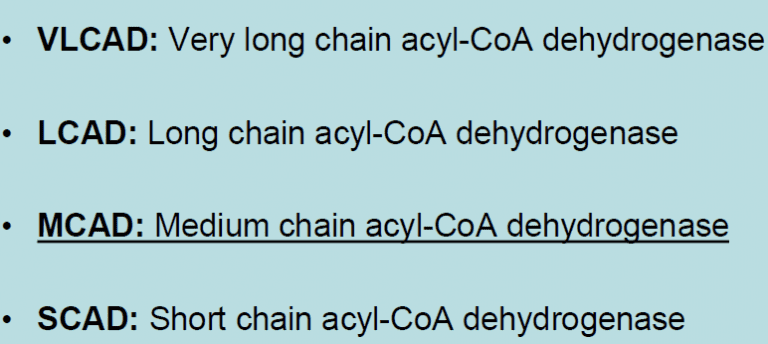
These disorders are inherited in an autosomal recessive manner. The most common is MCAD, which typically presents symptoms in the second year of life.
After 12 hours of fasting, symptoms may include vomiting, drowsiness, coma, and hypoglycemia, as well as carboxylic acid urea or activation of omega oxidation.
There is another illness called Jamaican vomiting, which occurs from eating unripe ackee fruit. The unripe fruit of this tree contains hypoglycin A and B, which can cause symptoms such as vomiting and even death by inhibiting the activity of the MCAD and SCAD enzymes. Beta oxidation occurs in peroxisomes.
In addition to mitochondria, other organelles like peroxisomes also contain the necessary enzymes for the beta oxidation of fatty acids.
The only distinction between these two oxidation pathways is the initial reaction. The initial reaction in the peroxisome is catalyzed by acetyl CoA oxidase and involves FAD, but the resulting FADH2 is unable to transfer its electrons to the electron transport chain. Instead, it transfers electrons and hydrogen to oxygen, producing hydrogen peroxide.
The peroxisomal catalase enzyme decomposes hydrogen peroxide. In peroxisomal oxidation, FADH2 is not converted to ATP but is lost as heat. The burning of fatty acids in peroxisomes depends on the consumption of oxygen in this organelle.
The enzymes in peroxisomes have a preference for fatty acids containing more than 8 carbon atoms. Fatty acid oxidation stops at 8 carbon atoms, and these fatty acids are then linked to the mitochondria for full oxidation.
High-fat diets and fat-reducing drugs, such as clofibrate and the anti-diabetic drug glitazone, induce peroxisomal enzymes. In addition to oxidizing fatty acids, peroxisomes also shorten carboxylic acid chains, convert cholesterol to bile acids, and form ether lipids such as plasmalogens and platelet-activating factor.
Conclusion
- Fatty acid beta-oxidation is a process that produces energy from lipids in mitochondria and peroxisomes.
- Four types of acyl CoA dehydrogenase enzymes catalyze the first step of this process, depending on the length of the fatty acid chain.
- Deficiency of these enzymes can cause metabolic disorders, such as MCAD and Jamaican vomiting, that manifest as vomiting, coma, and hypoglycemia after fasting or eating unripe ackee fruit.
- Peroxisomal beta-oxidation differs from mitochondrial beta-oxidation in that it produces hydrogen peroxide instead of ATP, and it prefers long-chain fatty acids that are later transferred to mitochondria.
- Peroxisomal enzymes are induced by high-fat diets and drugs, and they also have other functions, such as bile acid synthesis and ether lipid formation.

